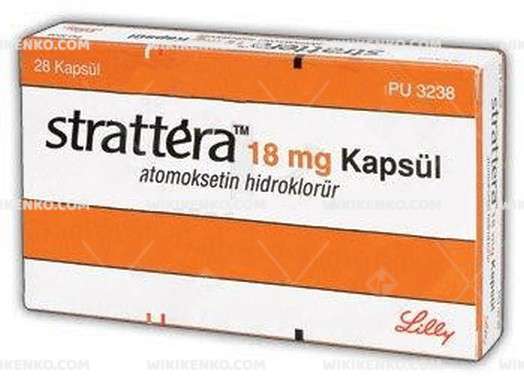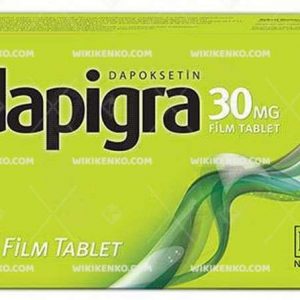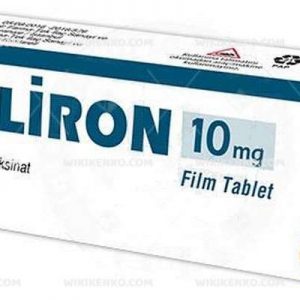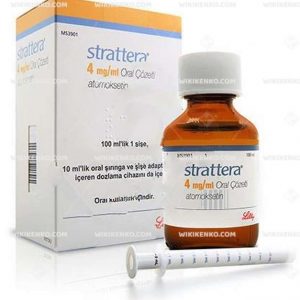Strattera Capsule 18 Mg
Strattera Capsule 18 Mg stands as a pivotal pharmacological intervention in the realm of Attention Deficit Hyperactivity Disorder (ADHD) management for children, teenagers, and adults. This article navigates the labyrinth of its therapeutic nuances, encompassing its mechanism of action, dosage intricacies, potential side effects, and comparative insights within the ADHD pharmacotherapeutic landscape.
| Dosage form | |
|---|---|
| Pack size | |
| Potency | 18 Mg |
| Manufacturer | |
| Origin | |
| Generic Name (Ingredient) | Each Capsule Contains Atomoxetine Hydrochloride Equivalent To 18 Mg Of Atomoxetine. |
Assuming your emergency circumstances for this product, visit Urgent Quotation page. Besides, for any pharmaceutical questions, please ask us in the comments section.
Description
1. What is Strattera?
- Definition: Strattera, encapsulated in an oral form, encapsulates the pharmacodynamic essence of atomoxetine.
- Indications: A therapeutic beacon in the treatment repertoire for ADHD in individuals aged 6 years and beyond.
2. Warnings and Precautions
- Contraindications:
- Navigate with caution if confronted with narrow-angle glaucoma, adrenal gland tumor, heart disease, coronary artery disease, or moderate to severe high blood pressure.
- Psychosis Risk: A caveat resonates – Strattera may unfurl the specter of new or exacerbated psychosis, particularly poignant in patients bearing a history of depression, mental illness, or bipolar disorder.
3. Dosage and Administration
- Recommended Dosage:
- Arrayed in strengths of 10 mg, 18 mg, 25 mg, 40 mg, 60 mg, 80 mg, and 100 mg.
- Individualized dosing, a bespoke orchestration harmonized with patient characteristics.
- Administration Preamble:
- Orally administered under the judicious aegis of healthcare professionals.
4. Side Effects
- Common Adverse Reactions:
- A trinity of nausea, dry mouth, and diminished appetite.
- A cadence of insomnia and fatigue.
- Rare Adverse Reactions:
- A symphony echoing elevated heart rate, heightened blood pressure, and liver function aberrations.
- Psychosis Risk: The vigilant sentinel must heed the refrain of unusual thoughts or behavior.
5. Additional Considerations
- Pregnancy and Breastfeeding:
- The counsel of a medical sage is prudent before embarking on Strattera during gestation.
- The safety cadence during breastfeeding dances to an uncertain melody.
- Interaction with Other Medications:
- A temporal chasm of 14 days should part Strattera and MAO inhibitor therapy.
Remember, the sagacity of a healthcare provider is the lodestar in navigating the therapeutic odyssey with Strattera. It, devoid of stimulant attributes, eschews the shackles of dependence. The tapestry of complete symptom amelioration may unfurl over several weeks, invoking the necessity for steadfast patience and consistent utilization in the management mosaic of ADHD.
Please note that this exegesis proffers general insights and should gracefully coexist with the counsel of an astute medical custodian.
How long does it take to witness the effects of Strattera?
The chronicle of Strattera (atomoxetine), a pharmacological paragon in the realm of Attention Deficit Hyperactivity Disorder (ADHD) therapeutics, unfurls its therapeutic overture over a temporal canvas of 2 to 4 weeks post-initiation. Let the elucidation deepen:
- Mechanism of Action:
- Strattera, in its selective inhibition of norepinephrine reuptake, orchestrates an augmentation of norepinephrine levels.
- A crucial divergence emerges – Strattera, in stark contrast to stimulant brethren, stands resolute in its non-stimulant constitution, eschewing the siren call of dependence.
- Dosage Forms:
- The pharmacopeia extends variously, encapsulating capsule strengths of 10 mg, 18 mg, 25 mg, 40 mg, 60 mg, 80 mg, and 100 mg.
- Pharmacokinetics:
- Absorption: Rapid and resolute.
- Distribution: A volumetric narrative encapsulates a Volume of Distribution (Vd) approximating 0.85 L/kg.
- Metabolism: Hepatic machinations invoke the CYP2D6 and CYP2C19 enzymes, birthing active progeny in 4-hydroxyatomoxetine and N-desmethylatomoxetine.
- A chasm segregates the CYP2D6 poor metabolizers, where the amphorae of atomoxetine overflow in abundance compared to their extensive metabolizer counterparts.
- Excretion: A ceremonial exodus, predominantly through urine (80%), graced by the conjugated 4-hydroxy metabolite. A fractional trinity (less than 3%) embarks on an unaltered sojourn through urine.
- Clinical Considerations:
- Suicidal Ideation: A caveat etched in the annals of clinical vigilance – Atomoxetine dallies with an augmented risk of suicidal ideation in transient vignettes. The watchman’s gaze should be unwavering, especially in the nascent stages of treatment.
- Side Effects: The lexicon of common adversities is spun with threads of nausea, dry mouth, diminished appetite, insomnia, and fatigue.
In the kaleidoscopic panorama of individual responses, the oracle of personalized counsel from the healthcare augur takes precedence. The crescendo of complete symptom sublimation orchestrates its opus over weeks, demanding the virtuosity of patience and unwavering fidelity to the therapeutic cadence.
How does Strattera compare to other ADHD medications?
The pharmacopeia unveils an ensemble of medications dedicated to the chalice of Attention Deficit Hyperactivity Disorder (ADHD) treatment. The juxtaposition of Strattera (atomoxetine) against its ADHD pharmacotherapeutic compatriots elucidates thus:
- Stimulants:
- Examples: Adderall, Ritalin, Vyvanse, Concerta, Focalin, Dexedrine.
- Mechanism of Action: A symphony of dopamine and norepinephrine augmentation, serenading improved attention and focus.
- Benefits: A ballet of rapid onset, heightened efficacy, and fiscal frugality.
- Risks: A shadowland fraught with abuse potential, the specter of dependence, and an adversarial cardiovascular ballet.
- Nonstimulants:
- Examples: Strattera, Intuniv, Kapvay.
- Mechanism of Action: Nonstimulants, choreographed in the selective dalliance with norepinephrine receptors, harmonize the cadence toward improved attention and focus.
- Benefits: An oasis delineated by a reduced siren call of abuse and dependence, and a paucity of cardiovascular adversities.
- Risks: The sonnet of a protracted onset, a nuanced efficacy tapestry, and a financial repertoire of exigency.
Remember, the sanctum of individual medical counsel is the vade mecum in navigating the labyrinthine corridors of ADHD therapeutic optimization. Let the aegis of personalized guidance illuminate the path toward therapeutic equipoise.
Please ensure that all medical decisions are carefully curated under the watchful eye of a healthcare luminary, in consonance with individualized patient needs and therapeutic exigencies.
Key Information
| Aspect | Details |
|---|---|
| Generic Name | Atomoxetine |
| Drug Class | Adrenergic uptake inhibitors for ADHD |
| Indications | Treatment of ADHD in individuals aged 6 years and beyond |
| Dosages | 10 mg, 18 mg, 25 mg, 40 mg, 60 mg, 80 mg, and 100 mg. |
Use the form below to report an error
Please answer the questions as thoroughly and accurately as possible. Your answers will help us better understand what kind of mistakes happen, why and where they happen, and in the end the purpose is to build a better archive to guide researchers and professionals around the world.
The information on this page is not intended to be a substitute for professional medical advice, diagnosis, or treatment. always seek the advice for your physician or another qualified health provider with any questions you may have regarding a medical condition. Always remember to
- Ask your own doctor for medical advice.
- Names, brands, and dosage may differ between countries.
- When not feeling well, or experiencing side effects always contact your own doctor.
Cyberchondria
The truth is that when we’re sick, or worried about getting sick, the internet won’t help.
According to Wikipedia, cyberchondria is a mental disorder consisting in the desire to independently make a diagnosis based on the symptoms of diseases described on Internet sites.
Why you can't look for symptoms on the Internet
If diagnoses could be made simply from a textbook or an article on a website, we would all be doctors and treat ourselves. Nothing can replace the experience and knowledge of specially trained people. As in any field, in medicine there are unscrupulous specialists, differences of opinion, inaccurate diagnoses and incorrect test results.






Reviews
There are no reviews yet.